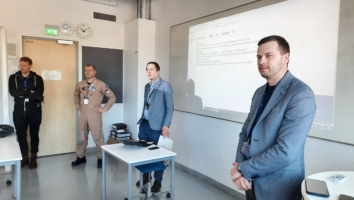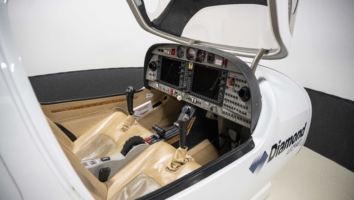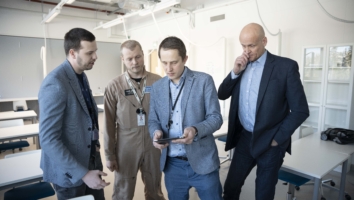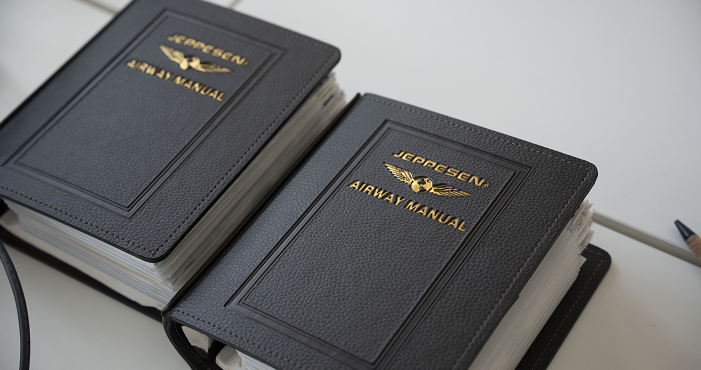
The success behind our MPL program

Anthony Heithuis, the Xfly and Nordica aircraft captain and MPL Program Manager, leads us through the process of becoming a pilot within our new MPL study program, which can be an enjoyable journey and a dream for many.
One can join the program at the Xfly Aviation Academy tailored for modern needs and standards in partnership with the Finnish Patria Group. Anthony provides aspiring pilots with a first glimpse and guidance to the MPL program.
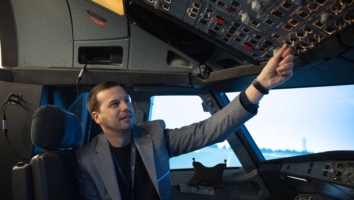
About the benefits of the MPL training program
“During the MPL course our trainees will be provided with knowledge, skills and attitudes which are more relevant to fulfilling tasks of an airline pilot those of traditional integrated or modular ATPL courses. The MPL program entirely focuses on developing the “core competencies” that are important for an airline pilot, guaranteed by early introduction of multi-pilot operations. I would say there is a focus on non-technical skills (human factors) and therefore less “negative training” is involved, meaning that all the knowledge and skills developed are directly transferrable to a transport category aircraft. From day one the trainees will learn acting in an airline-like environment following the Xfly procedures and policies. It gives our cadets a chance to get acquainted with the Xfly-specific procedures and thus gain valuable experience on an advanced multi-engine turbine aircraft in a multi-crew environment. The ATR type rating is an integral part of the course,” Anthony explains.
The phases that make a difference
“The MPL course consists of four phases. The first one introduces the “core flying skills”. Here the trainee will learn basic flying skills on a modern single-engine training aircraft by both, using sight and visual only, and alternatively – by making use of instruments. This phase sums up to around 70 hours of practice. Followingly, the trainees will move directly to the ATR simulator where they will spend around 170 hours. During the “basic” simulator phase, our trainees will be introduced to basic multi-pilot operations, crew resource management and threat and error management. The cadets will learn the basics on flying a multi-engine aircraft, for example flying with one engine only. During the “intermediate” and the “advanced” simulator phases the trainee will gradually be introduced to more advanced maneuvers and system failures, ” Heithuis explains.
“At this point the trainees will have accumulated around 240 hours of total flight time and are ready for an MPL skill test. After successfully passing it, the trainees will undergo a “base training” where a minimum of 6 landings are performed on a real ATR aircraft before starting employment with Xfly. That is tailored to gain initial operating experience,” the aviator showcases.
How does the MPL stand out?
“In comparison, a more traditional pilot course would be a sort of a “one size fits them all” approach, to my mind. It usually isn’t tailored for an operational environment of a specific airline, or not even for the role of an airline pilot. The traditional programs usually focus to a great extent on technical skills. Non-technical skills, however – important in a multi-pilot environment – as well as the tools used in an airline, such as crew resource management and threat and error management, are usually trained during the last 30 hours during the so-called “Multi-Crew Cooperation” course (namely MCC). The latter is more of an “add-on”. While aviation as a whole, and aircrafts have gone through a significant technical evolutionary process over time, we cannot say the same about the training of airline pilots available. Traditional programs train pilots until they achieve a minimum level of skills for a certain qualification, rather than focusing on developing the so called “core competencies”, important for the role of a pilot to my mind. The MPL with its competency-based training and assessment philosophy is a new page in training pilots. It is my best belief that the MPL is the future of pilot training,” Anthony continues listing the advantages.
Are there any misconceptions regarding MPL, CPL and ATPL courses?
“”A common misconception is that an MPL is believed to be a cheap version of the CPL and a way for the airline or the flight school to save money on training: this is not the case. While it is true that the MPL relies more on the use of modern flight simulators rather than actual flying time on small aircraft. It is important to note that the kind of simulators used within the MPL trainings cost considerably more per hour compared to the hourly rate of a small training aircraft. Also the minimum amount of hours for an MPL course is higher, a total of 240 hours,“ the experienced captain explains.
How is our MPL program unique?
“There is no such thing – at least not for now – as a “generic” MPL course. MPL training is always tailored for an airline’s unique operational environment, using the airline’s own procedures and policies. Therefore no MPL course is similar to another. The MPL is always built in partnership with an airline, allowing the trainee gain initial operating experience and therefore kick-off one’s career as a pilot.” Anthony concludes.
Keep your eyes peeled on new admissions on www.flightacademy.ee and www.patriagroup.com . If you already are a pilot, feel free to start a career at the Nordic Aviation Group, Xfly and Nordica, by visiting our career site on jobs.nagroup.ee.
